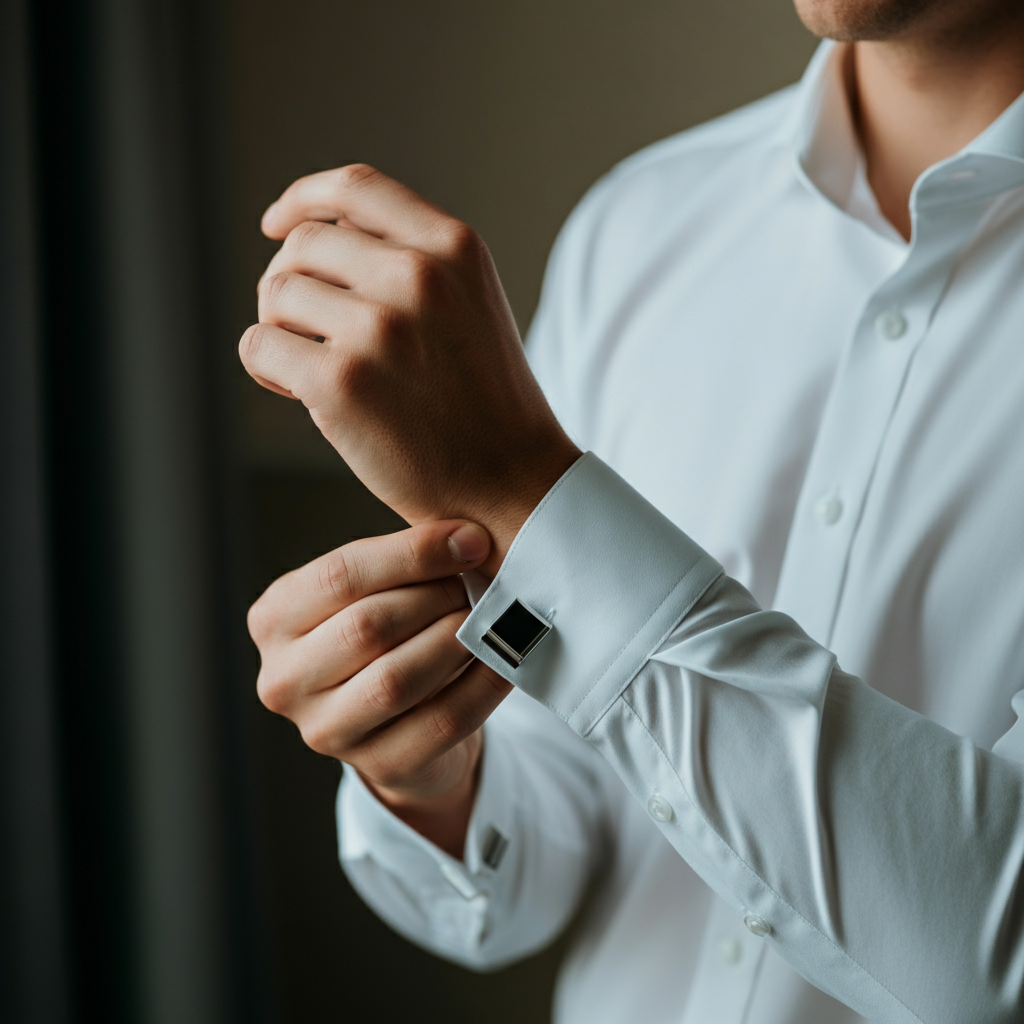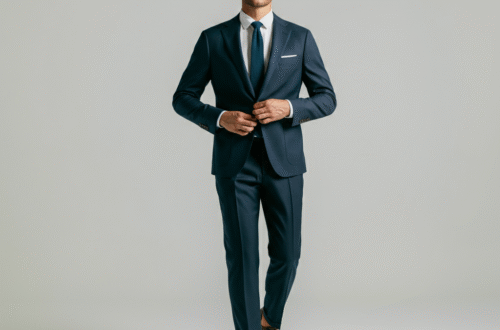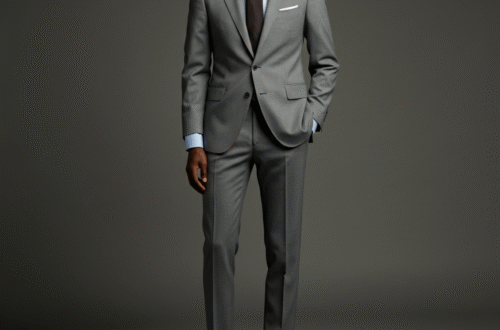Cufflinks add a touch of class and personality to any formal or semi-formal outfit. Yet, many people feel unsure about them. They might seem a bit old-fashioned or complicated, but learning how to wear cufflinks is surprisingly simple. This guide will walk you through everything you need to know, from the types of shirts you need to the different cufflink styles available. Soon, you’ll be wearing them with confidence and elevating your personal style.
This accessory offers a unique way to express yourself. Whether you’re attending a wedding, a business meeting, or a special dinner, cufflinks are the perfect finishing touch. They show attention to detail and a respect for classic style. Let’s dive into the world of cufflinks and discover how easy and rewarding it can be to make them a part of your wardrobe.
Key Takeaways
- Cufflinks can only be worn with shirts that have French cuffs or convertible cuffs.
- There are several types of cufflink closures, including bullet back, whale back, fixed back, and chain link.
- The process of putting on cufflinks involves folding the cuff back and aligning the holes before inserting the cufflink.
- Choose cufflink materials and styles that match the formality of the event and complement your other accessories.
- Knowing how to wear cufflinks properly demonstrates attention to detail and adds a sophisticated flair to your look.
Understanding the Right Shirt for Cufflinks
Before we get into the specifics of how to wear cufflinks, it’s crucial to understand that they don’t work with just any dress shirt. Cufflinks require a special type of shirt cuff designed specifically for them. A standard buttoned cuff, often called a barrel cuff, won’t work.
French Cuffs: The Classic Choice
The most common and traditional shirt for cufflinks is one with French cuffs. These cuffs are extra long and have buttonholes on both sides but no buttons. To wear them, you fold the cuff back on itself, creating a neat, double-layered cuff. The buttonholes on both layers should align perfectly. This creates the opening through which you’ll insert the cufflink, securing the two sides of the cuff together. French cuffs present a very polished and formal look, making them ideal for black-tie events, weddings, and important business functions. They offer a pristine canvas to showcase your chosen cufflink style, making your wrist a focal point of your ensemble.
Convertible Cuffs: The Versatile Option
For those who want more flexibility in their wardrobe, there’s the convertible cuff. This clever design offers the best of both worlds. A convertible cuff has two buttonholes: one standard buttonhole and another one right next to the button. This means you can wear the shirt like a regular button-cuff shirt for everyday occasions. However, when you want to step up your style, you can ignore the button and use the extra buttonhole to wear cufflinks instead. This versatility makes shirts with convertible cuffs a great investment, especially if you’re just starting to build a more formal wardrobe and aren’t ready to commit to a collection of French cuff shirts.
A Step-by-Step Guide on How to Wear Cufflinks
Putting on cufflinks for the first time might feel a bit awkward, but it’s a simple process you’ll master quickly. Just follow these steps, and you’ll be securing your cuffs like a pro in no time.
- Prepare Your Shirt: First, put on your French cuff shirt. Instead of buttoning the cuff as you normally would, let it hang down over your hand.
- Fold the Cuff: Take the end of the cuff and fold it back over itself, away from your hand. The goal is to create a clean, double-layered cuff where the inside edges meet.
- Align the Holes: Once folded, make sure the buttonholes on both layers of the cuff are perfectly aligned. You should be able to see straight through all four holes. Pinch them together to hold them in place.
- Prepare the Cufflink: Before inserting it, make sure your cufflink is ready. For the most common types, like bullet back or whale back closures, this means swiveling the toggle into a straight line, parallel with the post of the cufflink.
- Insert the Cufflink: Holding the cuff holes together with one hand, take the cufflink in your other hand. Gently push the decorative front of the cufflink through all four aligned holes, starting from the outside.
- Secure the Closure: Once the post is all the way through to the inside of your wrist, secure the backing. For a bullet back, you’ll flip the toggle 90 degrees to lock it in place. For a whale back, you’ll flip the flat piece down. The backing should rest comfortably against the inside of your wrist.
That’s it! Your cuff is now secured with a stylish accessory. Repeat the process on the other wrist. Remember, the decorative face of the cufflink should always be visible on the outside of your wrist.
Exploring Different Types of Cufflinks
Cufflinks come in various styles and mechanisms. Understanding the different types can help you choose the best pair for your needs, whether you prioritize ease of use, security, or design. Each style has its own unique look and feel.
Bullet Back & Toggle Closure
This is arguably the most common and popular type of cufflink today. It features a small, bullet-shaped or cylindrical piece of metal that is hinged to the post. To secure it, you simply swivel the “bullet” 90 degrees so it’s perpendicular to the post, preventing it from slipping back through the buttonholes. This design is incredibly easy to use with one hand, which is a major reason for its popularity. It is secure, straightforward, and available in countless designs, making it a fantastic starting point for anyone new to cufflinks.
Whale Back Closure
Similar to the bullet back, the whale back closure features a flat, solid piece of metal that flips flat against the post for insertion. Once through the cuff, you flip the “whale tail” back down to a 90-degree angle to secure it. This style is also very easy to handle and provides a secure fit. The large, flat backing offers a solid anchor, and like the bullet back, it’s a very common style found in a wide range of materials and designs, from novelty shapes to elegant precious metals.
Fixed Back & Stud Closure
Fixed back cufflinks have no moving parts. The backing, post, and decorative face are all one solid piece. The backing is typically a small, rounded nub or another decorative shape that is slightly smaller than the front. To put them on, you have to carefully work the smaller end through the buttonholes. While they can be a little trickier to put on, they are extremely durable because there are no hinges or moving parts that could break. Many vintage and high-end cufflinks feature this design, offering a classic and often more elegant look.
Chain Link Cufflinks
The chain link is the most traditional and classic style of cufflink. It consists of two decorative faces (often identical, but sometimes different) connected by a short, flexible chain. To wear them, you push one side through the cuff holes and let it hang. This style is a bit looser than modern closures. A unique benefit of chain link cufflinks is that both the inside and outside of your cuff have a decorative element. They provide a touch of old-world charm and are favored by style connoisseurs who appreciate classic menswear.
|
Cufflink Type |
Ease of Use |
Security |
Style |
|---|---|---|---|
|
Bullet Back |
Very Easy |
High |
Modern & Common |
|
Whale Back |
Very Easy |
High |
Modern & Common |
|
Fixed Back |
Moderate |
Very High |
Classic & Durable |
|
Chain Link |
Moderate |
Moderate |
Traditional & Elegant |
Choosing Cufflinks for the Occasion
The key to mastering how to wear cufflinks is knowing which pair to choose for a specific event. The style, material, and formality of your cufflinks should align with your outfit and the setting.
For Black Tie and Formal Events
When dressing for a black-tie affair like a gala, a formal wedding, or an awards ceremony, elegance and subtlety are key. Opt for classic and understated cufflinks. Materials like sterling silver, gold, or platinum are excellent choices. Simple designs, such as polished ovals, squares, or knots, work beautifully. Inlays of mother-of-pearl, onyx, or other precious stones can add a touch of sophisticated color without being distracting. For these events, your cufflinks should complement your tuxedo and other accessories, not overpower them. Think of them as a refined final touch to a perfectly polished look.
For Business and Professional Settings
In a professional environment, your cufflinks can show a bit of personality while still maintaining a polished look. For daily office wear or important meetings, stick to classic metals like silver or gold. Simple geometric shapes, silk knots, or discreet enamel designs are all appropriate. You could also choose cufflinks that subtly reflect your profession or hobbies, as long as they are tasteful. For example, a lawyer might wear a pair of gavel-shaped cufflinks. The goal is to look sharp and put-together, and your cufflinks should contribute to that professional image without being a distraction.
For Casual and Social Gatherings
Casual events, like a dinner party, a date night, or a creative industry mixer, are where you can have more fun with your cufflinks. This is the perfect opportunity to let your personality shine. Novelty cufflinks that showcase your interests—be it sports, movies, or music—are a great choice. Brighter colors, unique materials like wood or fabric, and unconventional shapes are all welcome here. The key is to match them to the tone of your outfit and the event. If you’re wearing a patterned shirt or a colored blazer, your cufflinks can be a conversation starter and a true expression of your individual style. Exploring different options on sites like truefashionstory.com Blog can give you great inspiration.
Styling and Coordination Tips
Wearing cufflinks is about more than just securing your cuffs; it’s about creating a cohesive and stylish look. Coordinating your cufflinks with the rest of your outfit is essential.
A simple rule of thumb is to match the metal of your cufflinks to the other metals you are wearing. If you have a silver watch, silver-toned cufflinks will look best. If you’re wearing a gold wedding band, opt for gold cufflinks. This simple coordination extends to your belt buckle and tie bar as well. Creating this metallic harmony ensures your entire look feels intentional and well-put-together, showcasing a keen eye for detail.
Don’t be afraid to coordinate with colors, too. If your tie or pocket square has hints of blue, blue enamel cufflinks can tie the look together beautifully. However, be careful not to be too “matchy-matchy.” The goal is coordination, not perfect duplication. For example, a light blue silk knot cufflink can complement a navy tie without being identical. Experimenting with these subtle connections is a great way to advance your personal style.
Frequently Asked Questions (FAQ)
Q1: Can I wear cufflinks with any dress shirt?
No, cufflinks can only be worn with shirts that have specific cuffs designed for them. The most common are French cuffs, which are double-layered, and convertible cuffs, which have an extra buttonhole to accommodate cufflinks.
Q2: Should my cufflinks match my watch?
It is a classic styling rule to match the metal of your cufflinks to the metal of your watch. For example, wear silver cufflinks with a silver or stainless steel watch. This creates a cohesive and polished look.
Q3: Are cufflinks still in style?
Absolutely! While they may not be an everyday accessory for everyone, cufflinks are a timeless element of men’s style. They are essential for formalwear and are a great way to add personality and sophistication to business and social outfits.
Q4: How do I choose my first pair of cufflinks?
For your first pair, it’s wise to choose something versatile. A simple pair of silver knot or rectangular cufflinks will work for a wide range of occasions, from business meetings to weddings. Once you are comfortable, you can explore more unique designs.
Q5: What’s the difference between a bullet back and a whale back cufflink?
Both are very similar, easy-to-use styles. A bullet back has a small, cylinder-shaped toggle that swivels to secure it. A whale back has a larger, flat piece of metal (the “whale tail”) that flips down to lock the cufflink in place. Both are secure and popular choices.





